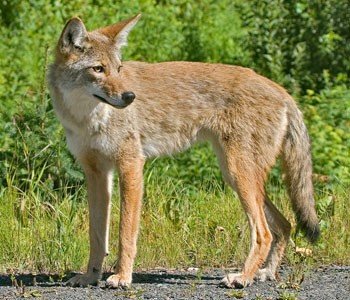Nassau County, NY - May 5, 2015 - With a coyote sighting in New York City last week, Nassau County Executive Edward P. Mangano and the Nassau SPCA today issued the following safety and behavior tips for residents in the event coyotes reach Long Island. There is no need for alarm or panic, and there have been no sightings in Nassau County at the present time.
Tips:
* If you see a coyote, dial 911. Do not allow coyotes to approach people or pets.
* Unintentional food sources attract coyotes, other wildlife and increase risks to people and pets.
* Do not feed coyotes. Discourage others from doing so.
* Do not feed pets outside. If you are feeding feral cats please stay and observe the cat feedings and remove all food before leaving.
* Eliminate availability of bird seed. Concentrations of birds and rodents at feeders can attract wildlife. If you see a coyote(s) near your birdfeeder, clean up waste seed and spillage to remove the attractant.
* Make certain that garbage is inaccessible to wildlife.
* Fence or enclose compost piles so they are not accessible.
* Teach children to appreciate wildlife from a distance as to avoid the risk of being injured.
* If confronted, stand tall, and hold arms out to look large. If a coyote lingers for too long, then make loud noises, wave your arms, throw sticks and stones. Do not run away, running away after seeing a coyote is behaving like prey.
* Do not allow pets to run free. Supervise all outdoor pets to keep them safe from coyotes and other wildlife, especially at sunset and at night. Small dogs (even if on leash) and cats are especially vulnerable to coyotes. Keep cats indoors.
* Conflicts between dogs and coyotes can happen any time of the year, but are more likely in the months of March and April. It is during this time that coyotes are setting up their denning areas for the soon-to-arrive pups.
* Fencing your yard may deter coyotes. The fence should be tight to the ground, preferably extending six inches below ground level, and taller than 4 feet.
* Remove brush and tall grass from around your home to reduce protective cover for coyotes. Coyotes are typically secretive and like areas where they can hide.
* Be aware people do coexist with coyotes but caution, care, and common sense must be used.










